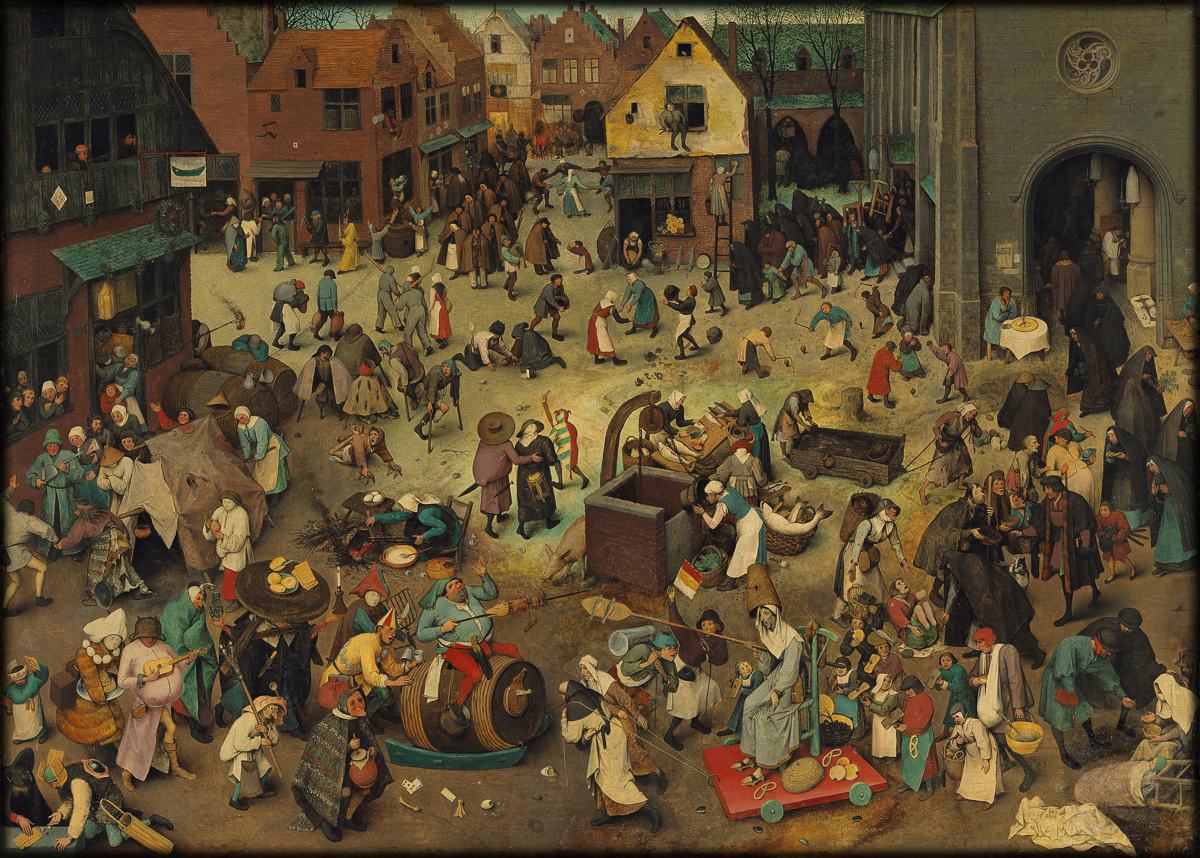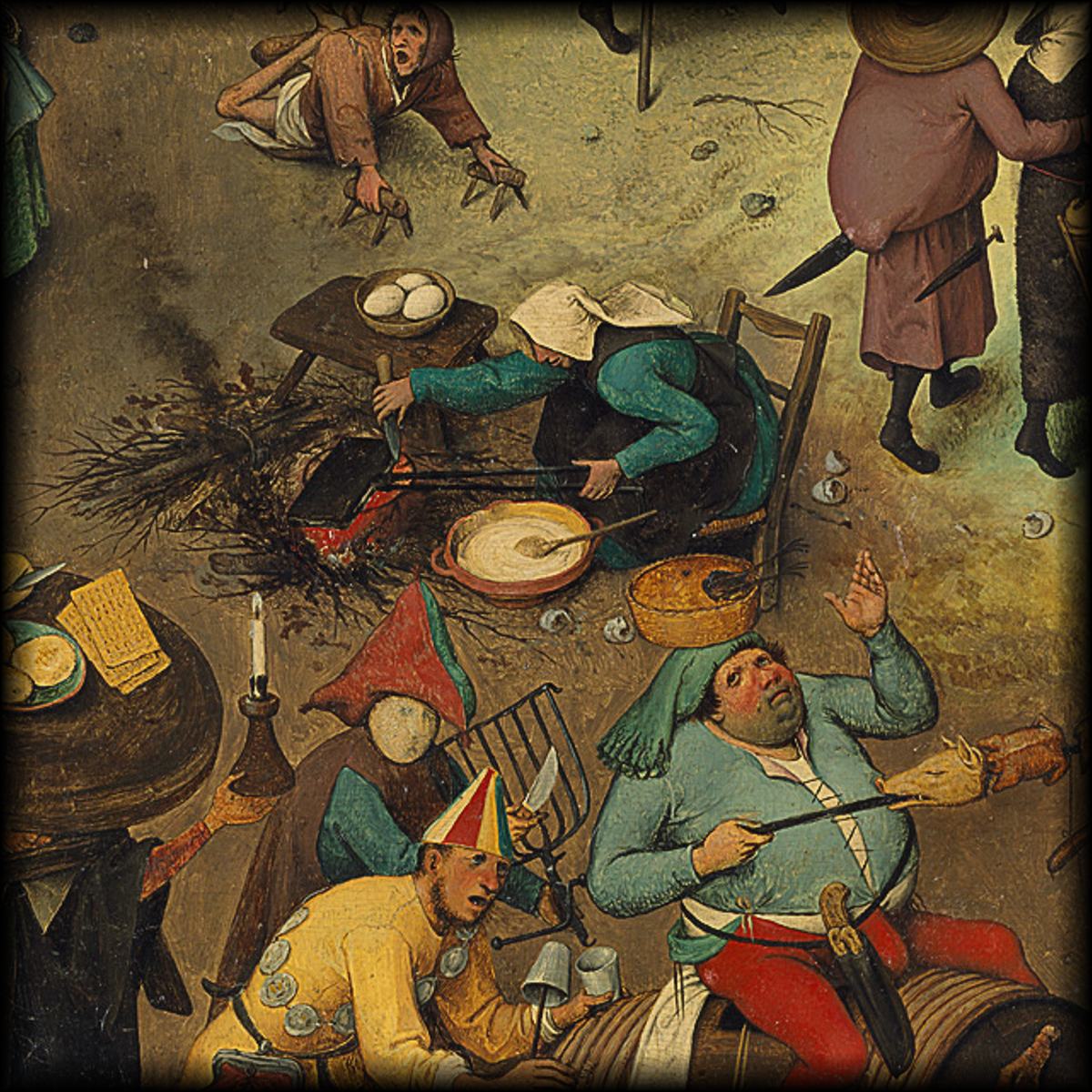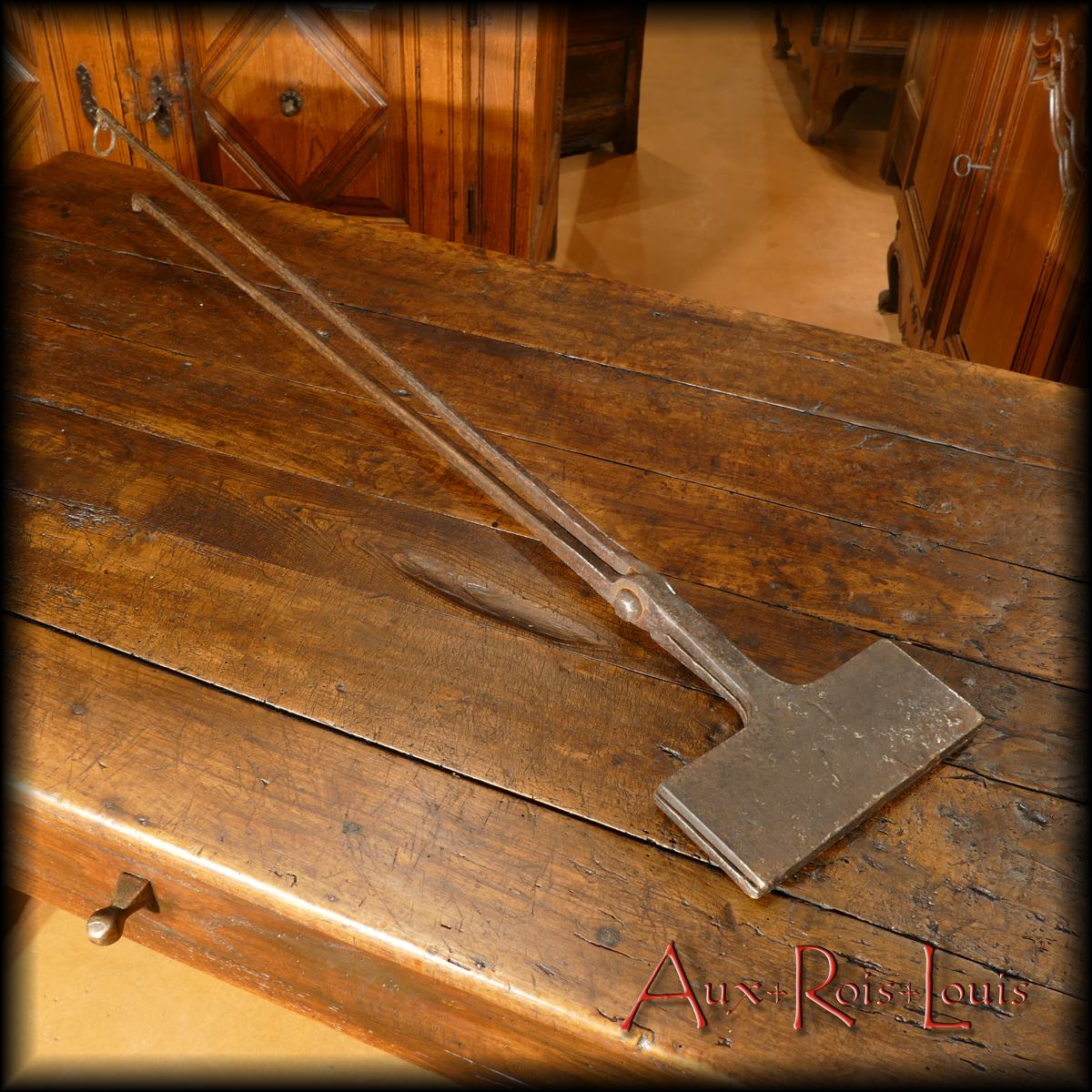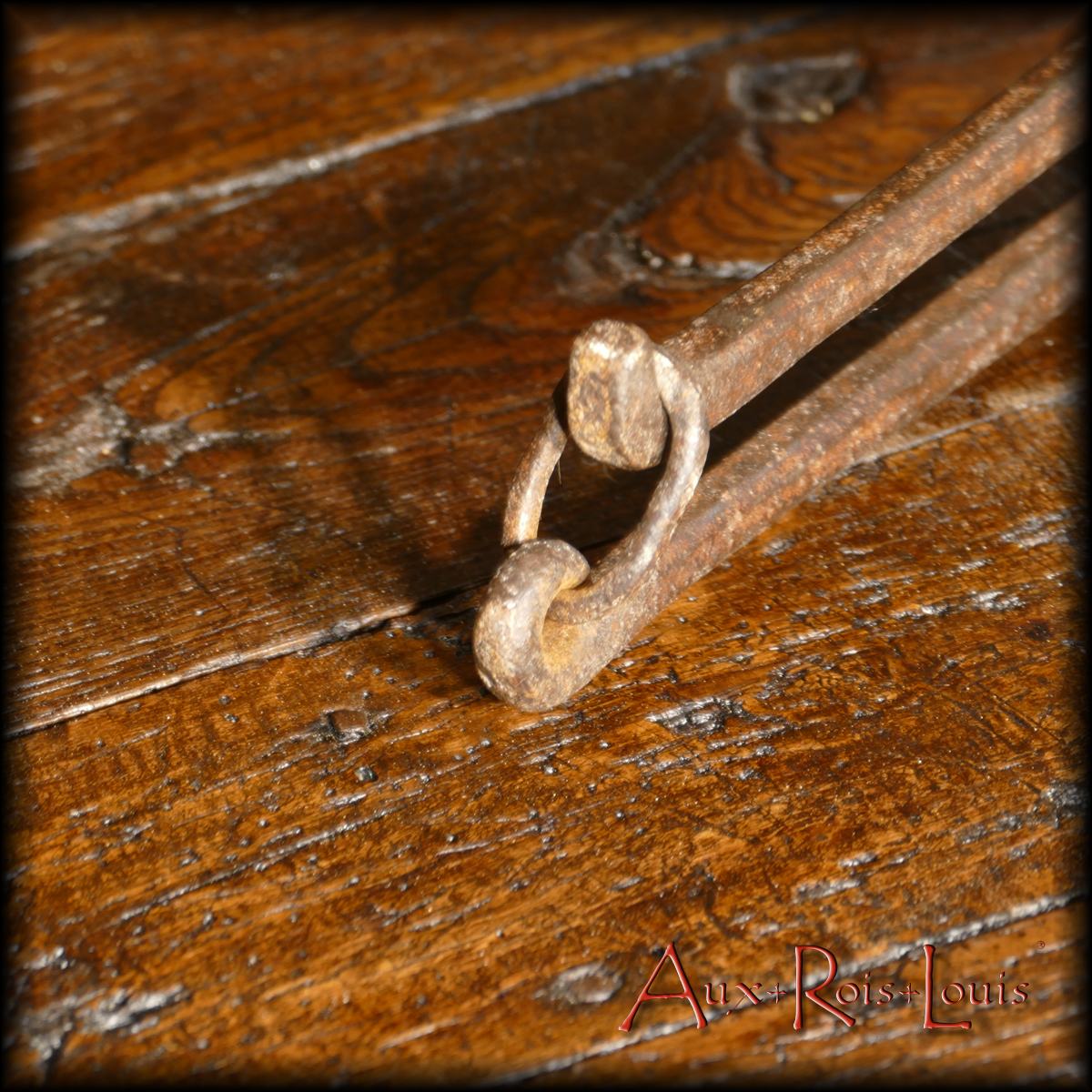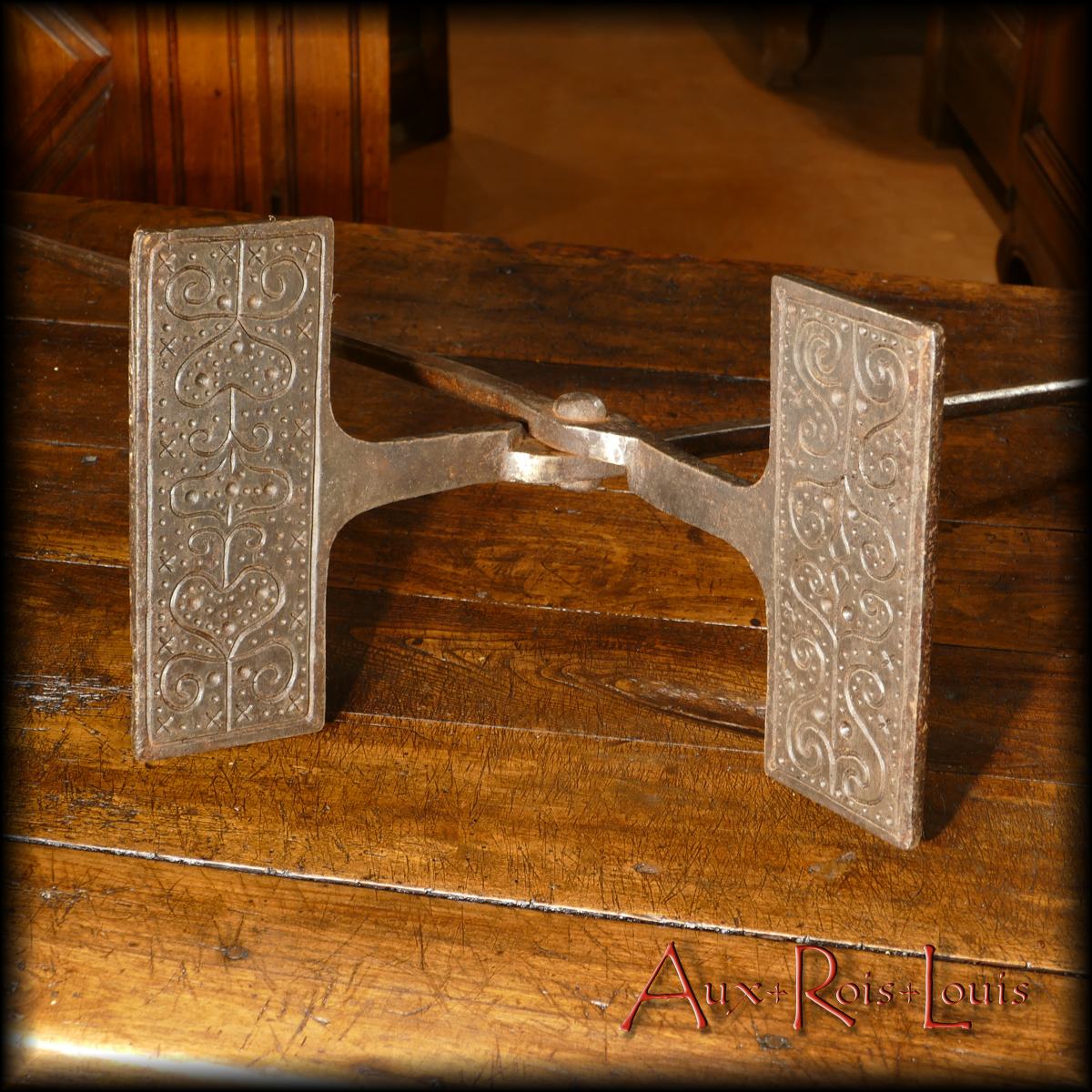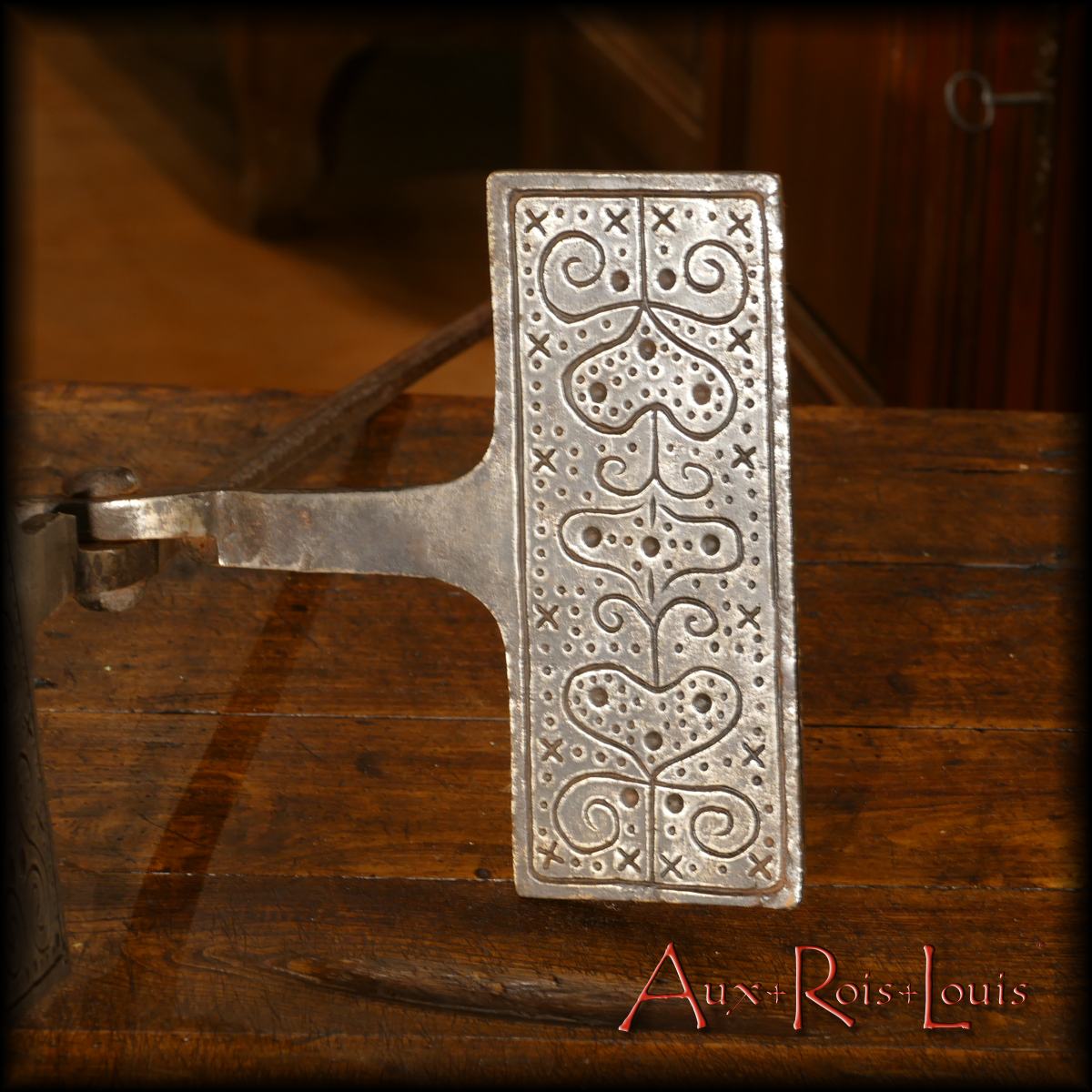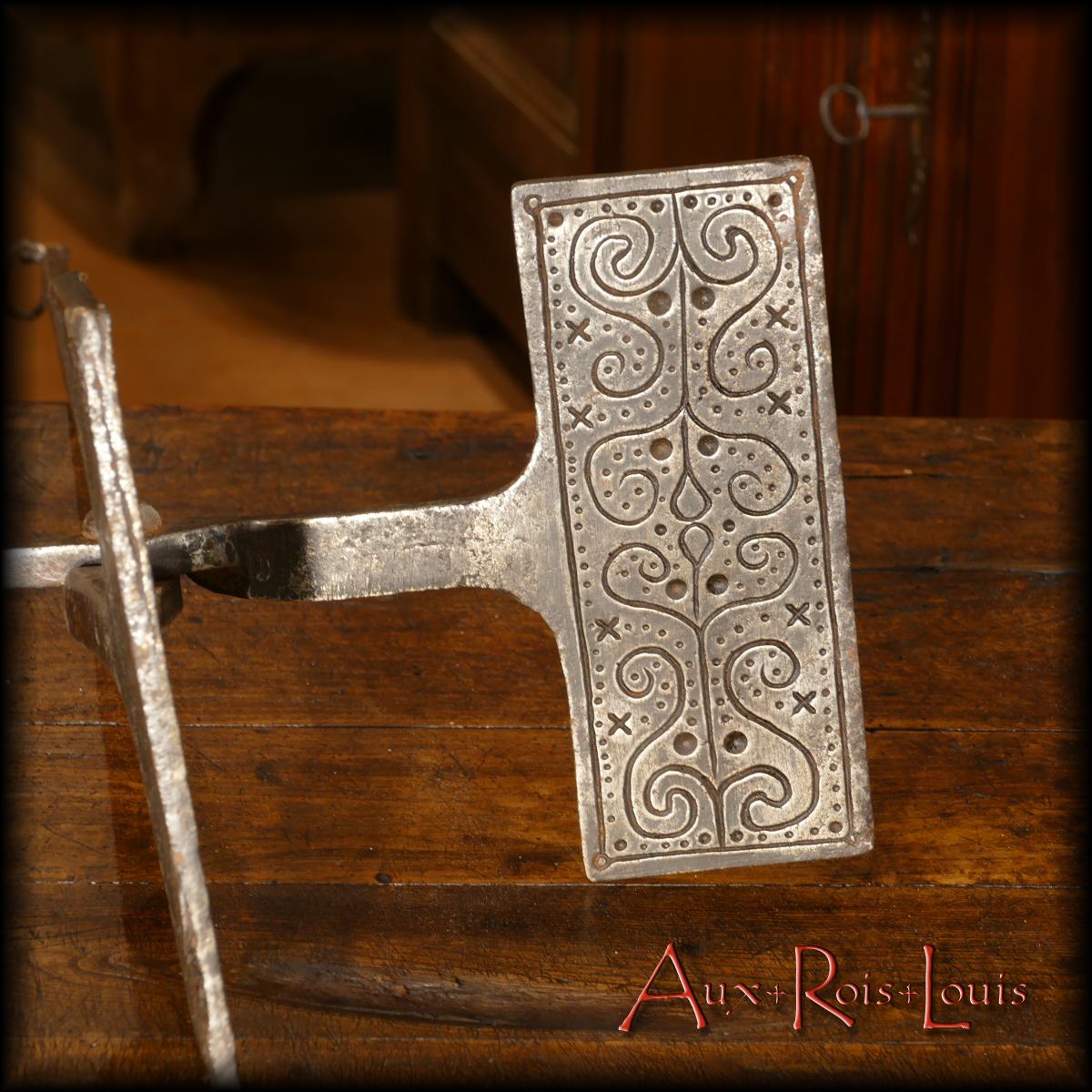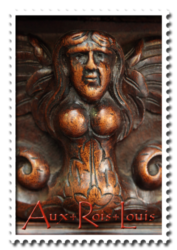With this type of waffle iron shaped by a blacksmith from Périgord in the 18th century, you could cook not waffles but deliciously crunchy wafers, whose dough was made of wheat flour mixed with milk, butter and sugar
It was necessary to have the right dexterity to, once the ladle of dough poured on the plate below, press it immediately by closing the waffle iron and blocking the latch at the end of the handles and to ensure cooking and to ensure the printing of sought-after patterns.
We notice, on this model in particular, different patterns on the palette on the left, decorated with hearts facing each other, and on the one on the right, decorated with hearts which this time seem to be open.
The two plates benefiting all around these hearts, decorations of scrolls, small crosses and dotted lines.
These refined ornaments testify to the value of this object, probably offered on the occasion of a marriage between wealthy peasant families.
This waffle maker was part of the bride’s trousseau and enchanted young and old alike with playful evenings by the fire, perfumed with the sweet scent of pretty, barely golden wafers.
Illustration
Tableau de Pieter Brueghel l’Ancien, Le Combat de Carnaval et Carême, 1559. Huile sur bois actuellement au Kunsthistorisches Museum, Vienne, Autriche.
The work of art depicted in this image and the reproduction thereof are in the public domain worldwide. The reproduction is part of a collection of reproductions compiled by The Yorck Project. The compilation copyright is held by Zenodot Verlagsgesellschaft mbH and licensed under the GNU Free Documentation License


